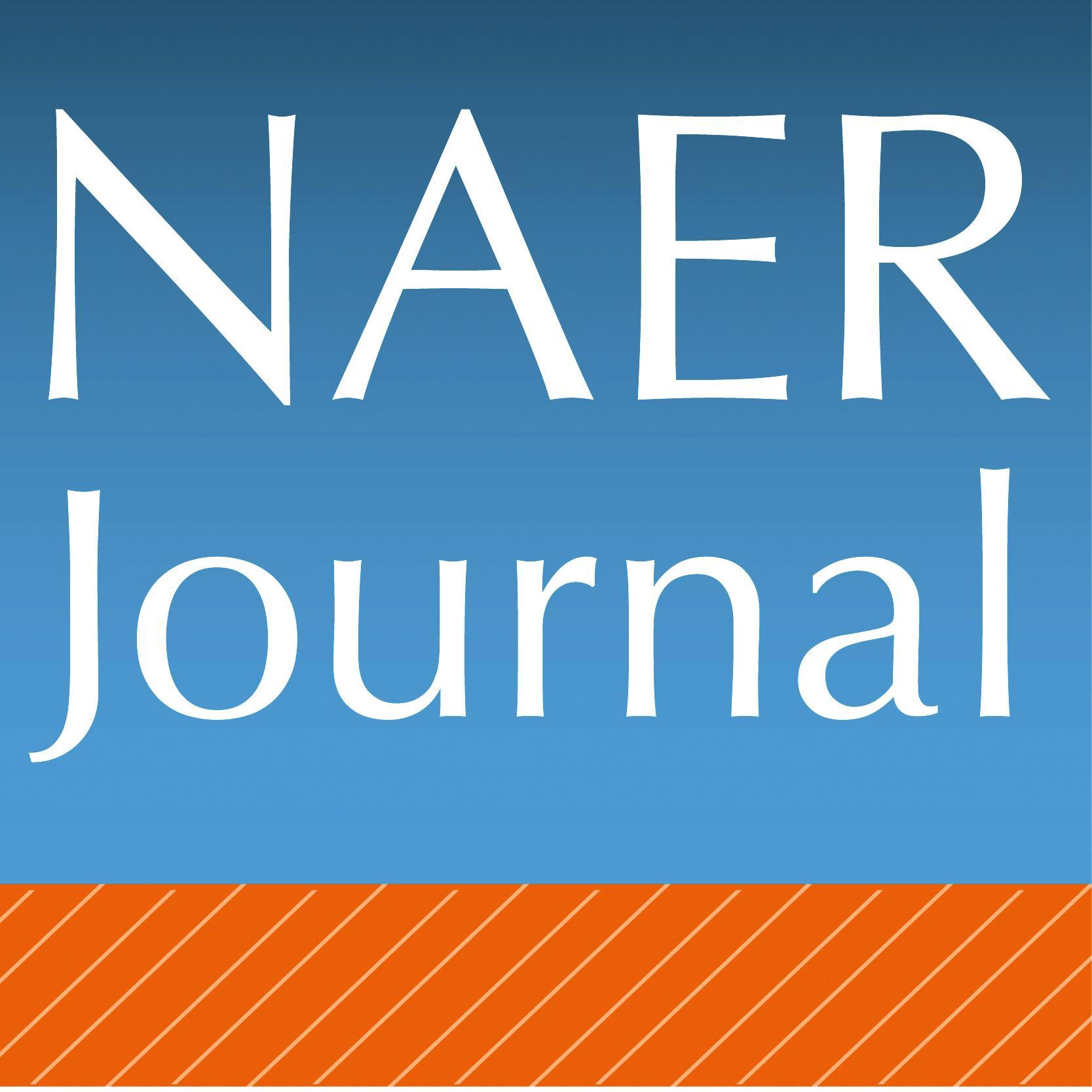Trazabilidad de los discursos sobre tecnología educativa: los caminos de la influencia
Descargas
-
Resumen3275
-
PDF5087
-
PDF Kindle5087
Citas
Alexander, B., Ashford-Rowe, K., Barajas-Murphy, N., Dobbin, G., Knott, J., McCormack, M., Pomerantz, J., Seilhamer, R., & Weber, N. (2019). EDUCAUSE Horizon Report: 2019 Higher Education Edition (Horizon Report, p. 44). Educause.
Anderson, T., & Rivera-Vargas, P. (2020). A Critical look at Educational Technology from a Distance Education Perspective. Digital Education Review, 0(37), 208–229. https://doi.org/10.1344/der.2020.37.208-229
Ball, S. (2013). The education debate. Policy Press.
Ball, S. (2016). Following policy: Networks, network ethnography and education policy mobilities. Journal of Education Policy, 31(5), 549–566. https://doi.org/10.1080/02680939.2015.1122232
Beetham, H., & Sharpe, R. (2013). Rethinking Pedagogy for a Digital Age. Routledge. Taylor & Francis Group.
Betancor, G., María, S., Puig, L., Jorge, A., & Eugenia, C. (2021). Digital inequality at home. The school as compensatory agent. Computers & Education, 104195. https://doi.org/10.1016/j.compedu.2021.104195
Biesta, G., Takayama, K., Kettle, M., & Heimans, S. (2020a). Call for papers: A new agenda for teacher education research. Asia-Pacific Journal of Teacher Education, 48(5), 460–462. https://doi.org/10.1080/1359866X.2020.1818484
Biesta, G., Takayama, K., Kettle, M., & Heimans, S. (2020b). Teacher education between principle, politics, and practice: A statement from the new editors of the Asia-Pacific Journal of Teacher Education. Asia-Pacific Journal of Teacher Education, 48(5), 455–459. https://doi.org/10.1080/1359866X.2020.1818485
Bozkurt, A., Jung, I., Xiao, J., Vladimirschi, V., Schuwer, R., Egorov, G., Lambert, S., Al-Freih, M., Pete, J., Don Olcott, J., Rodes, V., Aranciaga, I., Bali, M., Alvarez, A. J., Roberts, J., Pazurek, A., Raffaghelli, J. E., Panagiotou, N., Coëtlogon, P. de, … Paskevicius, M. (2020). A global outlook to the interruption of education due to COVID-19 pandemic: Navigating in a time of uncertainty and crisis. Asian Journal of Distance Education, 15(1), 1–126.
Bridgstock, R. (2016). Educating for digital futures: What the learning strategies of digital media professionals can teach higher education. Innovations in Education and Teaching International, 53(3), 306–315. https://doi.org/10.1080/14703297.2014.956779
Brown, K. D., & Stevick, D. (2014). The Globalizing Labor Market in Education: Teachers as Cultural Ambassadors or Agents of Institutional Isomorphism? Peabody Journal of Education, 89(1), 4–16. https://doi.org/10.1080/0161956X.2014.862134
Buckingham, D., Scanlon, M., & Sefton-Green, J. (2001). Selling the Digital Dream. Marketing educational technology to teachers and parents. In A. M. Loveless & V. Ellis (Eds.), ICT, Pedagogy and the Curriculum: Subject to Change. Routledge.
Cabero, J. (2016). ¿Qué debemos aprender de las pasadas investigaciones en Tecnología Educativa? Revista Interuniversitaria de Investigación en Tecnología Educativa, 0(0). http://revistas.um.es/riite/article/view/256741
Caena, F. (2014). Teacher Competence Frameworks in Europe: Policy-as-discourse and policy-as-practice. European Journal of Education, 49(3), 311–331. https://doi.org/10.1111/ejed.12088
Castañeda, L. (2019). Debates sobre Tecnología y Educación: Caminos contemporáneos y conversaciones pendientes. RIED. Revista Iberoamericana de Educación a Distancia, 22(1). https://doi.org/10.5944/ried.22.1.23020
Castañeda, L., & Selwyn, N. (2018). More than tools? Making sense of the ongoing digitizations of higher education. International Journal of Educational Technology in Higher Education, 15, 22. https://doi.org/10.1186/s41239-018-0109-y
Castañeda, L., & Williamson, B. (2021). Assembling New Toolboxes of Methods and Theories for Innovative Critical Research on Educational Technology. Journal of New Approaches in Educational Research, 10(1), 1–14. https://doi.org/10.7821/naer.2021.1.703
Cerratto-Jahnke, T., & Jahnke, I. (Eds.). (2019). Emergent Practices and Material Conditions in Learning and Teaching with Technologies. Springer International Publishing. https://doi.org/10.1007/978-3-030-10764-2
Czerniewicz, L. (2020, March 15). What we learnt from “going online” during university shutdowns in South Africa. PhilOnEdTech. https://philonedtech.com/what-we-learnt-from-going-online-during-university-shutdowns-in-south-africa/
Daniel, S. J. (2020). Education and the COVID-19 pandemic. PROSPECTS, 49(1), 91–96. https://doi.org/10.1007/s11125-020-09464-3
Goodyear, P. (2020). Design and co‐configuration for hybrid learning: Theorising the practices of learning space design. British Journal of Educational Technology, 51(4), 1045–1060. https://doi.org/10.1111/bjet.12925
Gourlay, L. (2020). Quarantined, Sequestered, Closed: Theorising Academic Bodies Under Covid-19 Lockdown. Postdigital Science and Education, 1–21. https://doi.org/10.1007/s42438-020-00193-6
Gran View Research. (2020). Education Technology Market Size Report, 2020-2027 (GVR-4-68038-878-7). Gran View Research. https://www.grandviewresearch.com/industry-analysis/education-technology-market
Granovetter, M. (1983). The Strength of Weak Ties: A Network Theory Revisited. Sociological Theory, 1, 201–233. https://doi.org/10.2307/202051
Gu, X., Crook, C., & Spector, M. (2019). Facilitating innovation with technology: Key actors in educational ecosystems. British Journal of Educational Technology, 50(3), 1118–1124. https://doi.org/10.1111/bjet.12786
HolonIQ. (2020, August 6). Global EdTech market to reach $404B by 2025—16.3% CAGR. [HolonIQ]. HolonIQ. https://www.holoniq.com/notes/global-education-technology-market-to-reach-404b-by-2025/
Honan, E. (2010). Mapping discourses in teachers’ talk about using digital texts in classrooms. Discourse: Studies in the Cultural Politics of Education, 31(2), 179–193. https://doi.org/10.1080/01596301003679701
Jasanoff, S., & Kim, S.-H. (2015). Dreamscapes of Modernity: Sociotechnical Imaginaries and the Fabrication of Power. University of Chicago Press. https://doi.org/10.7208/chicago/9780226276663.001.0001
Kukulska-Hulme, A., Bossu, C., Coughlan, T., Ferguson, R., FitzGerald, E., Gaved, M., Herodotou, C., Rienties, B., Sargent, J., Scanlon, E., Tang, J., Wang, Q., Whitelock, D., & Zhang, S. (2021). Innovating Pedagogy 2021 (p. 55). Open University, UK.
Livingston, K. (2018). Multiple influences on teachers in changing environments. European Journal of Teacher Education, 41(2), 135–137. https://doi.org/10.1080/02619768.2018.1432318
Menashy, F. (2015). Understanding the roles of non-state actors in global governance: Evidence from the Global Partnership for Education. Journal of Education Policy, 31(1), 98–118. https://doi.org/10.1080/02680939.2015.1093176
Mintrom, M., & Vergari, S. (1998). Policy Networks and Innovation Diffusion: The Case of State Education Reforms. The Journal of Politics, 60(1), 126–148. https://doi.org/10.2307/2648004
Munro, M. (2018). The complicity of digital technologies in the marketisation of UK higher education: Exploring the implications of a critical discourse analysis of thirteen national digital teaching and learning strategies. International Journal of Educational Technology in Higher Education, 15(1), 11. https://doi.org/10.1186/s41239-018-0093-2
Onyema, E. M., Eucheria, N. C., Obafemi, F. A., Sen, S., Atonye, F. G., Sharma, A., & Alsayed, A. O. (2020). Impact of Coronavirus Pandemic on Education. Journal of Education and Practice, 11(13), 108.
Perrotta, C., Gulson, K. N., Williamson, B., & Witzenberger, K. (2020). Automation, APIs and the distributed labour of platform pedagogies in Google Classroom. Critical Studies in Education, 0(0), 1–17. https://doi.org/10.1080/17508487.2020.1855597
Player-Koro, C., Bergviken Rensfeldt, A., & Selwyn, N. (2017). Selling tech to teachers: Education trade shows as policy events. Journal of Education Policy, 1–22. https://doi.org/10.1080/02680939.2017.1380232
Player-Koro, C., Rensfeldt, A. B., & Selwyn, N. (2018). Selling tech to teachers: Education trade shows as policy events. Journal of Education Policy, 33(5), 682–703. https://doi.org/10.1080/02680939.2017.1380232
Regan, P. M., & Khwaja, E. T. (2019). Mapping the political economy of education technology: A networks perspective. Policy Futures in Education, 17(8), 1000–1023. https://doi.org/10.1177/1478210318819495
Rensfeldt, A. B., & Player-Koro, C. (2020). “Back to the future”: Socio-technical imaginaries in 50 years of school digitalization curriculum reforms. Seminar.Net, 16(2), 20–20. https://doi.org/10.7577/seminar.4048
Rogers, E. M. (2003). Diffusion of Innovations, 5th Edition (Edición: 5th Edition.). Simon & Schuster.
Saldaña, C. M., Welner, K. G., Malcolm, S., & Tisch, E. (2019). Examining the New Phenomenon of Teachers as Brand Ambassadors. In Commercialism in Education Research Unit. Commercialism in Education Research Unit. https://eric.ed.gov/?id=ED593277
Salinas, J. (2016). La investigación ante los desafíos de los escenarios de aprendizaje futuros. Revista de Educación a Distancia (RED), 50. https://doi.org/10.6018/red/50/13
Selwyn, N. (2016). Is technology good for education? Polity Press.
Selwyn, N. (2018). Technology as a Focus of Education Policy. In The Wiley Handbook of Educational Policy (pp. 457–477). John Wiley & Sons, Ltd. https://doi.org/10.1002/9781119218456.ch20
Selwyn, N., Hillman, T., Eynon, R., Ferreira, G., Knox, J., Macgilchrist, F., & Sancho-Gil, J. M. (2020). What’s next for Ed-Tech? Critical hopes and concerns for the 2020s. Learning, Media and Technology, 45(1), 1–6. https://doi.org/10.1080/17439884.2020.1694945
Spiteri, M., & Chang Rundgren, S.-N. (2020). Literature Review on the Factors Affecting Primary Teachers’ Use of Digital Technology. Technology, Knowledge and Learning, 25(1), 115–128. https://doi.org/10.1007/s10758-018-9376-x
Spring, J. (2012). Globalization of Education. International Journal of Chinese Education, 1(2), 139–176. https://doi.org/10.1163/22125868-12340002
Stech, S., Šeďová, K., & Lefstein, A. (2020). What is happening to the teaching profession? Editorial. Studia Paedagogica, 25(2), 5–10.
Stone, D. (2008). Global Public Policy, Transnational Policy Communities, and Their Networks. Policy Studies Journal, 36(1), 19–38. https://doi.org/10.1111/j.1541-0072.2007.00251.x
Strom, K. J. (2015). Teaching as Assemblage. Journal of Teacher Education, 66(4), 321–333. https://doi.org/10.1177/0022487115589990
Tahirsylaj, A. (2019). Revisiting ‘curriculum crisis’ dialogue: In search of an antidote. Nordic Journal of Studies in Educational Policy, 5(3), 180–190. https://doi.org/10.1080/20020317.2019.1664217
Verger, A., Steiner-Khamsi, G., & Lubienski, C. (2017). The emerging global education industry: Analysing market-making in education through market sociology. Globalisation, Societies and Education, 15(3), 325–340. https://doi.org/10.1080/14767724.2017.1330141
Watters, A. (2016). The Curse of the Monsters of Education Technology. Amazon.
Watters, A. (2017, February 16). What’s on the Horizon (Still, Again, Always) for Ed-Tech. Hack Education. http://hackeducation.com/2017/02/16/horizon
Williamson, B., & Hogan, A. (2021). Pandemic Privatisation in Higher Education: Edtech & University Reform. Education International. https://www.ei-ie.org/en/detail/17124/%E2%80%9Cpost-pandemic-reform-of-higher-education-market-first-or-purpose-first-digital-transformation%E2%80%9D-by-ben-williamson-and-anna-hogan
Derechos de autor 2021 Linda Castañeda Quintero

Esta obra está bajo una licencia internacional Creative Commons Atribución-NoComercial-CompartirIgual 4.0.
Aquellos autores que tengan publicaciones con esta revista aceptan los términos siguientes :
-
Los autores conservarán sus derechos de autor y garantizarán a la revista el derecho de primera publicación de su obra, el cuál estará simultáneamente sujeto a la Licencia Creative Commons Atribución no comercial compartir por igual 4.0 Internacional que permite compartir, copiar y redistribuir el material en cualquier medio o formato y adaptar, remezclar, transformar y construir sobre el material en los siguientes términos:
Reconocimiento - Debe dar el crédito apropiado, proporcionar un enlace a la licencia, e indicar si se han realizado cambios. Puede hacerlo de cualquier manera razonable, pero no de una manera que sugiere que el licenciante o su uso hace suya. No comercial - No puede utilizar el material con fines comerciales. Compartir bajo la misma - Si remezcla, transformar o crear sobre el material, se debe distribuir sus contribuciones bajo la misma licencia que el original. -
Los autores podrán adoptar otros acuerdos de licencia no exclusiva de distribución de la versión de la obra publicada (p. ej.: depositarla en un archivo telemático institucional o publicarla en un volumen monográfico) siempre que se indique la publicación inicial en esta revista.
-
Se permite y recomienda a los autores difundir su obra a través de Internet (p. ej.: en archivos telemáticos institucionales o en su página web) antes y durante el proceso de envío, lo cual puede producir intercambios interesantes y aumentar las citas de la obra publicada. (Véase El efecto del acceso abierto).
-
En cualquier caso, el Equipo Editorial entiende que las opiniones vertidas por los autores son de su exclusiva responsabilidad.
















